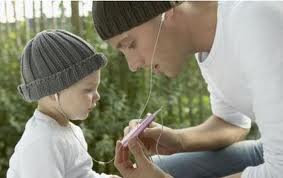 African-American men living in areas with low sunlight are up to 3 ½ times more likely to have Vitamin D deficiency than Caucasian men and should take high levels of Vitamin D supplements, according to a new study from Northwestern University Feinberg School of Medicine.
African-American men living in areas with low sunlight are up to 3 ½ times more likely to have Vitamin D deficiency than Caucasian men and should take high levels of Vitamin D supplements, according to a new study from Northwestern University Feinberg School of Medicine.
“This study shows that the current one-size fits all recommendations for 600 International Units (IU) of Vitamin D don’t work,” said Adam Murphy, M.D., a clinical instructor in urology at Northwestern’s Feinberg School. “Skin color and sunlight exposure need to be considered for recommended daily allowances of Vitamin D.”
Vitamin D deficiency causes brittle bones and has been linked to such diseases as prostate cancer, diabetes, rheumatoid arthritis and multiple sclerosis.
African-American men have lower levels of Vitamin D because the increased melanin in darker skin blocks the ultraviolet rays necessary for the body to produce the vitamin, Murphy said. Thus, African-American men require up to six times more sun exposure than Caucasian men to make adequate Vitamin D levels.
“It takes a dark-skinned male like myself 90 minutes three times a week to absorb enough sunlight to produce the recommended amount of Vitamin D compared to just 15 minutes three times a week for a Caucasian male,“ said the Chicago-based Murphy, who also is a physician at Jesse Brown VA Medical Center.
African-American men living in Chicago would need to take nearly 2,500 IU’s of Vitamin D daily to reach normal, healthy levels, Murphy said.
The Institute of Medicine recommends adults and children take 600 International IUs of Vitamin D daily, but Murphy says that’s way too low.
All men living in the northern third of the country “from Northern California all the way to Virginia” need to increase their Vitamin D supplementation, Murphy said. But the amount likely varies by region because Chicago residents, for example, aren’t outdoors as much as those who live in Washington or California.
For the study, blood samples were collected from 492 men ages 40 to 79 from three Chicago urology clinics along with demographic and medical information such as body mass index, skin melanin content, sunlight exposure and Vitamin D intake. In the study, 63 percent of African-American men were Vitamin D deficient compared to 18 percent of Caucasian men using the Institute of Medicine minimum recommendation of 20 nanograms per milliliter (ng/ml) of Vitamin D. African-American heritage, a high body mass index and lack of Vitamin D supplementation all were associated with Vitamin D deficiency.
Using the commonly used 30 ng/ml deficiency cutoff, 93 percent of African-American men were deficient in Vitamin D compared to 69.7 percent of Caucasian men.
Researchers found African-American men had an average of 17.2 ng/ml of Vitamin D in their blood serum, which is below the Institute of Medicine minimum recommendation. “When Vitamin D levels in the bloodstream are less than 20 ng/ml the bone starts to become brittle in adults and in kids it causes rickets,” Murphy said.
Caucasian men had an average level of 24.2 units of Vitamin D in their blood. A future study will look at Vitamin D levels in Hispanic and Asian men.
Marla Paul is the health sciences editor. Contact her at marla-paul@northwestern.edu
 Interesting in learning about men's health issues? Join Northwestern Medicine Physicians as they discuss men's health at a free seminar. Spouses and partners are welcome.
Interesting in learning about men's health issues? Join Northwestern Medicine Physicians as they discuss men's health at a free seminar. Spouses and partners are welcome.
 African-American men living in areas with low sunlight are up to 3 ½ times more likely to have Vitamin D deficiency than Caucasian men and should take high levels of Vitamin D supplements, according to a new study from Northwestern University Feinberg School of Medicine.
African-American men living in areas with low sunlight are up to 3 ½ times more likely to have Vitamin D deficiency than Caucasian men and should take high levels of Vitamin D supplements, according to a new study from Northwestern University Feinberg School of Medicine. Too often, teen pregnancy is thought of as an adolescent female's problem, but as they say, it takes two to tango. Of the approximately 10 million adolescent males aged 12 to 16 in 1996, a national study revealed that almost one in 10 became fathers before their 20th birthday(1). The
Too often, teen pregnancy is thought of as an adolescent female's problem, but as they say, it takes two to tango. Of the approximately 10 million adolescent males aged 12 to 16 in 1996, a national study revealed that almost one in 10 became fathers before their 20th birthday(1). The  Our recent blog on male menopause has generated a number of questions, especially on the side effects of hormone treatments. I went back to Dr. Robert Brannigan, a Northwestern University urologist, who was quoted in our
Our recent blog on male menopause has generated a number of questions, especially on the side effects of hormone treatments. I went back to Dr. Robert Brannigan, a Northwestern University urologist, who was quoted in our